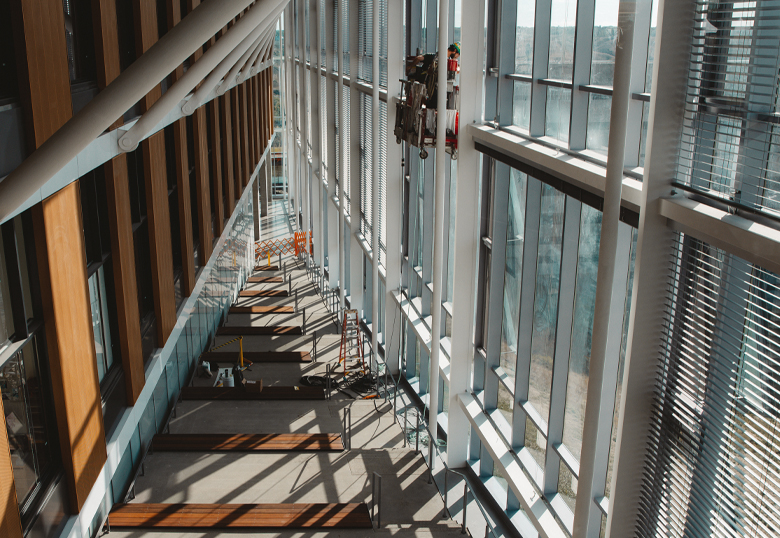The University of Lethbridge has struck gold with the new Science Commons building — achieving LEED Gold status for the first time in its history and further solidifying its commitment to employing environmentally sustainable practices in its construction and operation of campus buildings.

Lublinkhof says the design group (KPMB/Stantec Architects) investigated numerous options around energy generation and conservation and ultimately focussed its efforts on how to achieve long-term sustainability during the operational life of the building.
“The question we asked consistently was how can we use the least energy and operational effort possible while still providing our occupants the highest quality and safest interior environmental conditions?”
Some examples of sustainability features and practices incorporated into Science Commons include:
• Double exterior façade and automated opening windows. This natural ventilation strategy allows building operators to program the windows to open and close to respond to exterior conditions, thereby reducing the energy required for mechanical systems to heat or cool air.
• Automated low flow fume hoods
• Heat recovery technology to reuse thermal energy as it leaves the building to pre-heat or cool incoming air (depending on season)
• Waterless washroom fixtures
• Recirculating cooling system that routes coolant to more energy-intensive scientific instrumentation
• Daylight intensity lighting controls
• Construction strategies to select regionally sourced materials, utilization of low emission adhesives and paints, and reduction of composite materials off-gassing
• PCL Construction separated all construction waste into categories and tracked all outgoing debris to either be recycled or disposed of responsibly
• Continued implementation and enhancement of green caretaking and storage and collection of recyclables previously established in LEED silver projects and utilized throughout campus
Lublinkhof notes the University employed a number of business strategies that, while not mandated by LEED, significantly enhanced the building’s sustainability. One such strategy resulted in an award for Lethbridge’s SMP Engineering.
“We recognized LED lighting technology was advancing quickly and prices were falling,” says Lublinkhof. “Understanding there would be significant time between lighting design and actual fixture installation, we held off on selecting the fixtures until the last possible minute, giving us the most up-to-date lighting technology at the best possible cost.”
In the end, the Lethbridge office of SMP Engineering earned a province-wide honour, the DE Frost Award for Lighting Excellence.
“The integrated sustainable design strategies we conceptualized in 2015 are now paying dividends and Science Commons is a proud achievement for our entire team and our university,” adds Lublinkhof. “Our focus now turns to repurposing University Hall. It was built when sustainability wasn’t even a consideration, and as we renovate and restore interior finishes in the vacated laboratory spaces, we have the opportunity to look towards the future and transform an iconic building into an energy efficient and modern facility.”
What is LEED?
LEED refers to Leadership in Energy & Environmental Design and uses 60-plus criteria to gauge the ability of a project to meet rigorous environmental standards established by the Canada Green Building Council in seven major categories. These categories include sustainable sites, water efficiency, energy and atmosphere, materials and resources, indoor environmental quality, innovation in design, and regional priority. Each project must apply for LEED status and, after being judged, is rated on a point scale.
